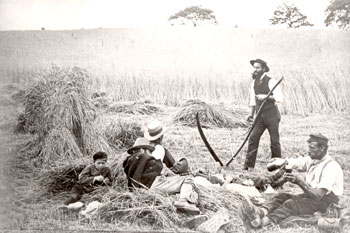History of Downham
Downham is almost certainly the biggest single development in the area covered by this Web site. It was a planned suburb built by the London County Council (LCC) on a green field site between Catford and Bromley. Its nearly 600 acres are mainly in the borough of Lewisham. The estate was built between 1924 and 1930 and provided 7,000 new homes for a population of 29,000. It is the third largest of the eight cottage type estates the LCC built on the outskirts of London in the 1920s.
After World War I the inner-city boroughs of Deptford and Bermondsey and the London County Council recognised the need for additional housing for London residents that would relieve overcrowding and offer a higher standard of accommodation than that provided by private landlords, but which would be close enough to traditional places of work to allow easy daily travel. There was also the legacy of a hiatus in house building during the war and a desire to reward returning veterans and their families with a higher standard of living. (There was also a fear of social unrest if such a provision was not seen to have been made.)
The immediate catalyst for the LCC to start the development was legislation of 1923 that provided a subsidy to local authorities building houses. The site was compulsorily purchased and Holland and Hannan and Cubitts, one of the biggest building firms in the country, engaged as contractor. A narrow gauge railway from nearby Grove Park provided transport for the huge amount of materials needed. In keeping with LCC policy the estate was mainly built from brick, but there were small-scale experiments using other building materials. Cost forced the LCC to build to a lower standard of finish to that initially planned. Despite this, the facilities were far in excess of those left behind by the vast majority of residents.
A significant part of the initiative for the scheme had come from the boroughs of Deptford and Bermondsey and they secured a commitment that 10% of residents should come from those boroughs. In general, though, the LCC was keen for reliable tenants that could meet the fairly hefty initial rents of 12 shillings (60p) per week. Many were skilled or semi-skilled manual workers or those in clerical occupations. Transport towards London was available on trains from Grove Park or trams from Southend.
Not all families stayed. There was dissatisfaction with the slow arrival of shops and social facilities; some returned to inner London for the convenience of work and others because they disliked the dislocation from a familiar environment.
Downham matured in the 1950s and 1960s with the arrival of its second generation, but its visual coherence and status as a monolith of local authority housing provision was broken by the right to buy legislation of the 1980s.









